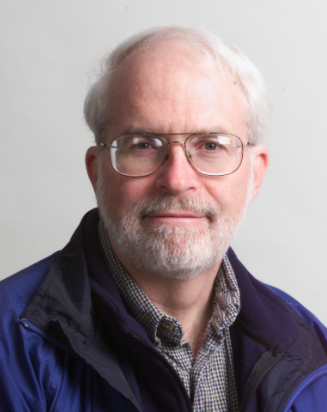 It would be difficult to identify an individual who has made greater, or more wide ranging, contributions to the High Energy Physics community than Murdock (Gil) Gilchriese. The path that brought Gil to LBNL started in 1987, while he was still on the faculty at Cornell University, when he spent time at LBNL as a member of the SSC Central Design Group and organized an influential workshop in Berkeley, “Experiments, Detectors, and Experimental Areas for the Supercollider”. He was the co-editor of the published proceedings, which became known as the “Black Book” and was found on nearly every supercollider physicist’s bookshelf. This workshop defined the detector concepts which developed into SDC and GEM, the two SSC detector construction projects.
It would be difficult to identify an individual who has made greater, or more wide ranging, contributions to the High Energy Physics community than Murdock (Gil) Gilchriese. The path that brought Gil to LBNL started in 1987, while he was still on the faculty at Cornell University, when he spent time at LBNL as a member of the SSC Central Design Group and organized an influential workshop in Berkeley, “Experiments, Detectors, and Experimental Areas for the Supercollider”. He was the co-editor of the published proceedings, which became known as the “Black Book” and was found on nearly every supercollider physicist’s bookshelf. This workshop defined the detector concepts which developed into SDC and GEM, the two SSC detector construction projects.
Gil was first hired at LBNL in 1990 as a Senior Scientist to serve as the SDC Project Manager, after first spending a couple of years as the Director of Research at the Superconducting Supercollider in Texas. After the cancellation of the SSC in 1993, the Black Book served as the inspiration for the detectors at the Large Hadron Collider (LHC), ATLAS and CMS. When the US joined the LHC, Gil was the ATLAS silicon and pixel subsystem leader (1996-2007) as well as the LBNL ATLAS group founder and leader (1994-2008). In 2009, Gil transitioned into leadership roles in the direct search for dark matter beginning with the Deep Underground Science and Engineering Laboratory (DUSEL), which later became the Sanford Underground Research Facility (SURF). He joined the LUX dark matter experiment located at SURF as Project Scientist, and subsequently served as the LZ Project Director from 2016 until the present time. Gil will lead LZ to a successful completion with the CD-4 review in August 2020, after which LZ will embark on five years of data taking at SURF in the continuing search for dark matter particles.
Gil is known universally as the consummate project manager, frequently tapped by funding agencies to spearhead reviews of the most complex projects. Management of today’s HEP projects requires the ability to balance technical, cost, schedule, risk, political, and personnel factors. Beginning with the SSC proto-collaborations, Gil understood the critical role this balance would play as the field progressed towards more complex efforts. His approach, and achievements, set the gold standard. If anyone was to compare a manager/leader’s performance, it would be to Gil. While large HEP projects demand the complex leadership where Gil excels, his achievements also span fundamental detector and engineering R&D and infrastructure. Gil made contributions to the development of novel carbon materials to provide precision support and thermal management for silicon tracking detectors.
With the LBNL Engineering Division he developed the LBNL Composites Workshop into an important core capability of the laboratory, providing precision structures necessary for generations of the ATLAS tracker and numerous other projects. With support from the DOE’s SBIR program, he participated in the development of the high conductivity carbon foams now ubiquitous in precision tracking applications. With LDRD support Gil worked to develop the integrated stave structure which is now the basis of the ATLAS upgrade and has been adopted by a number of other collaborations.
Another measure of success is the variety of people whom Gil has mentored. This list includes many of the leading members of the LBNL Physics and Engineering Divisions, as well as dozens of post-docs and students now playing important roles in HEP internationally. Finally, the result of any effort is measured in scientific output. In 2012, the LHC discovered the Higgs Boson, and the upgraded LHC with improved detectors incorporating technologies first advanced by Gil will extend the search for new physics beyond the Standard Model. The LUX experiment has set world leading limits on heavy dark matter particles, and LZ will soon extend this sensitivity by more than an order of magnitude. These scientific achievements are the fruit of fundamental R&D and complex detector construction projects skillfully organized and led by Gil.
